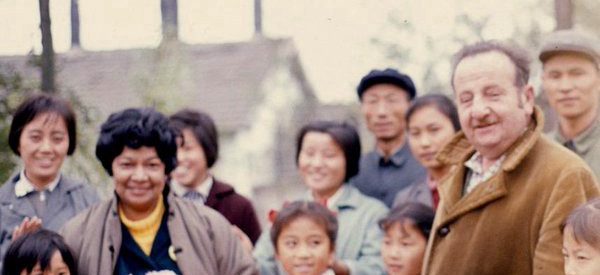To commemorate Black History Month in the United States, the Fairbank Center presents a reading and teaching introduction to the history of Black and African Americans? interactions with the People?s Republic of China. This guide includes blog posts, journal articles, books and book chapters, audio-visual resources, digital archives, and other materials that can be used to teach the confluence of black and Chinese history in the 20th century.
By Keisha A. Brown, Assistant Professor of History at Tennessee State University, and Ruodi Duan, Ph.D. Candidate in History at Harvard University. Edited by James Evans, Publications Coordinator at Harvard?s Fairbank Center.
 W. E. B. Du Bois and Shirley Graham Du Bois arriving in southern China, April 1959. W. E. B. Du Bois Papers, UMass Amherst
W. E. B. Du Bois and Shirley Graham Du Bois arriving in southern China, April 1959. W. E. B. Du Bois Papers, UMass Amherst
- Blackness in Modern China: W.E.B. Du Bois and Chinese Representations of Blackness, Fairbank Center Blog
Keisha A. Brown describes how traveling in China inspired her to research how blackness was historically perceived in modern China.
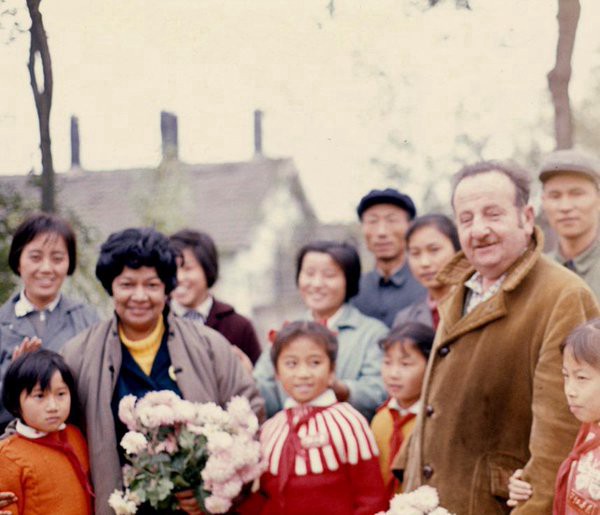 Vickie Garvin with Leibel Bergman in 1960s China (image: Lincoln and Miranda Bergman)
Vickie Garvin with Leibel Bergman in 1960s China (image: Lincoln and Miranda Bergman)
- Black Power in China: Mao?s Support for African American ?Racial Struggle as Class Struggle,? Fairbank Center Blog
Ruodi Duan explains how Chinese depictions of African American internationalism and social movements help us better understand racial nationalism in the Cold War.
 Holding up Mao?s ?Little red book? Black Panther / Power Rally to Free Huey Newton in San Francisco California in May 1969. Copyright janine wiedel
Holding up Mao?s ?Little red book? Black Panther / Power Rally to Free Huey Newton in San Francisco California in May 1969. Copyright janine wiedel
- Readings on Transnational African American History, African American Intellectual History Society
Nico Slate, Professor of History at Carnegie Mellon University, and Clayton Vaughn-Roberson, Ph.D. Candidate in the Department of History at Carnegie Mellon University, detail a list of key works in the growing field of transnational African American History.
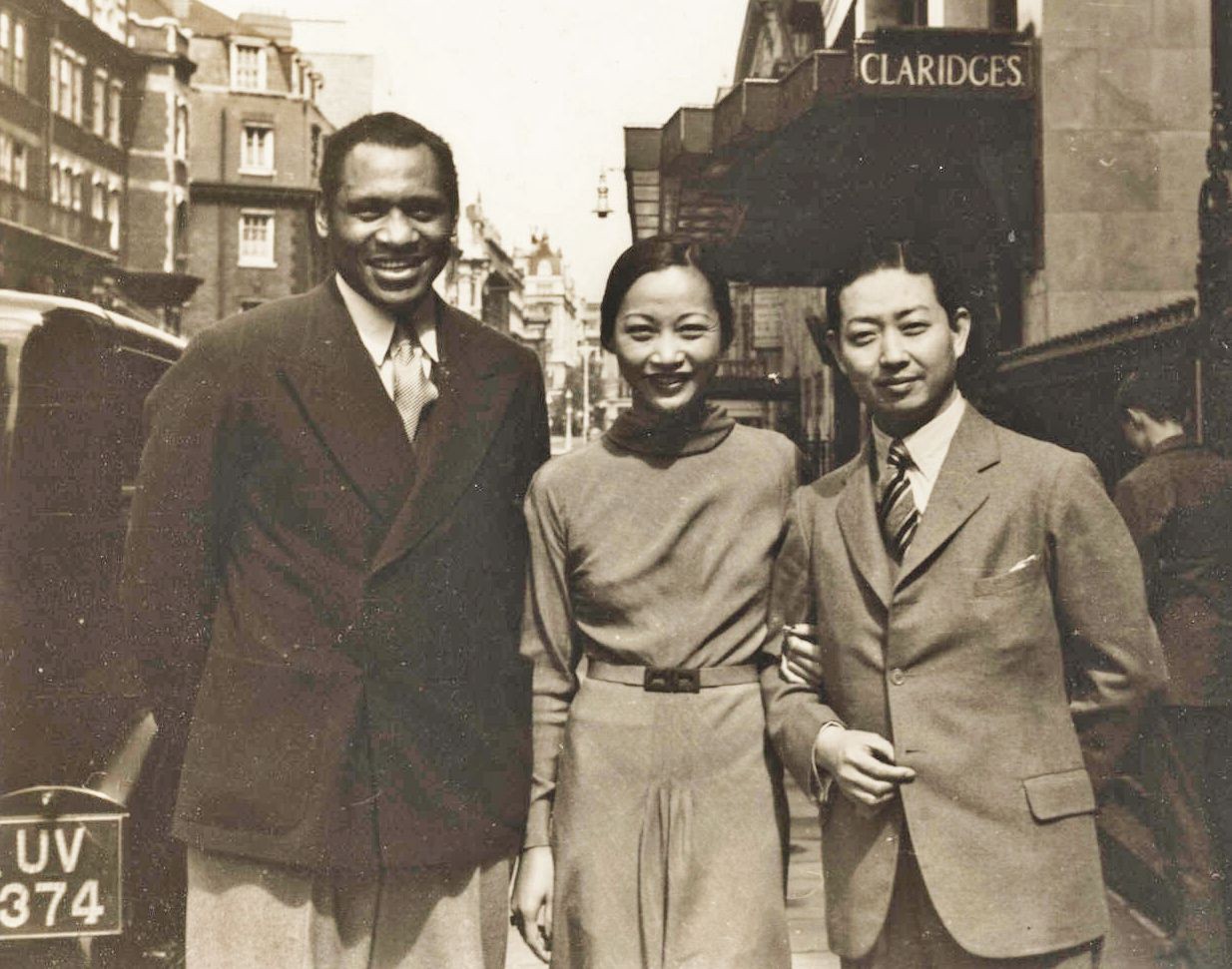 Singer Paul Robeson meets with Chinese opera singer Mei Lan-fang and opera singer and producer Wang Shiao-lou outside of Claridges in London in the 1930s.
Singer Paul Robeson meets with Chinese opera singer Mei Lan-fang and opera singer and producer Wang Shiao-lou outside of Claridges in London in the 1930s.
- Roar, China! Langston Hughes in Shanghai, Historic Shanghai
Historic Shanghai details the poet Langston Hughes? trip to Shanghai in 1934.
 Buck Clayton and his Harlem Gentlemen at the Canidrome, French Concession, Shanghai in the 1930s
Buck Clayton and his Harlem Gentlemen at the Canidrome, French Concession, Shanghai in the 1930s
- A Minority in the Middle Kingdom: My Experience Being Black in China, ChinaFile
Marketus Presswood explains his experiences of studying Chinese in China in 1997 as the only black student in his class.
Contemporary Reflections
- An Afro-Asian Future, Huffington Post
- Asian Americans: Right to be Angry at Harvard, not African Americans, Diverse Issues in Higher Education
- Being a Good Ally, Diverse Issues in Higher Education
- Being a Tourist is not the Same as Being a Minority, Diverse Issues in Higher Education
- Bringing Together Asian Americans and African Americans?, Huffington Post
- Howard University Changed My Life, Huffington Post
Journal Articles
 ?Proletariat of the world unite?, propaganda poster by Chen Yanning, Lin Yong, Wu Qizhong, and Yang Xiaoming, 1968
?Proletariat of the world unite?, propaganda poster by Chen Yanning, Lin Yong, Wu Qizhong, and Yang Xiaoming, 1968
- Keisha A. Brown, ?Blackness in Exile: W.E.B. Du Bois? Role in the Formation of Representations of Blackness as Conceptualized by the Chinese Communist Party (CCP),? Phylon, Vol. 53, ?2 (Winter 2016), pp. 20?33.
- Robin R. Means Coleman, ?All Around the World Same Song: Blackness, Racism, and Popular Culture in China,? Journal of Media Sociology, 1, 1/2, 2009, 5?21
- Robeson Taj Frazier, ?Afro-Asia and Cold War Black Radicalism,? Socialism and Democracy, 25:1, 2011, 257?265
- Robeson Taj Frazier and Lin Zhang, ?Ethnic identity and racial contestation in cyberspace: Deconstructing the Chineseness of Lou Jing,? China Information, 28(2), 2014, 237?258.
 ?Standing in front of the Great Wall, Dr. Tolbert Small, top right, is part of a Black Panther Party delegation which visited the People?s Republic of China in 1971.? The Black Panther Newspaper.
?Standing in front of the Great Wall, Dr. Tolbert Small, top right, is part of a Black Panther Party delegation which visited the People?s Republic of China in 1971.? The Black Panther Newspaper.
- Robeson Taj Frazier, ??Thunder in the East: China, Exiled Crusaders, and the Unevenness of Black Internationalism,? American Quarterly, Volume 63, Number 4, December 2011, pp. 929?953
- Yunxiang Gao, ?W. E. B. and Shirley Graham Du Bois in Maoist China,? Du Bois Review: Social Science Research on Race, Volume 10 Issue 1, Spring 2013
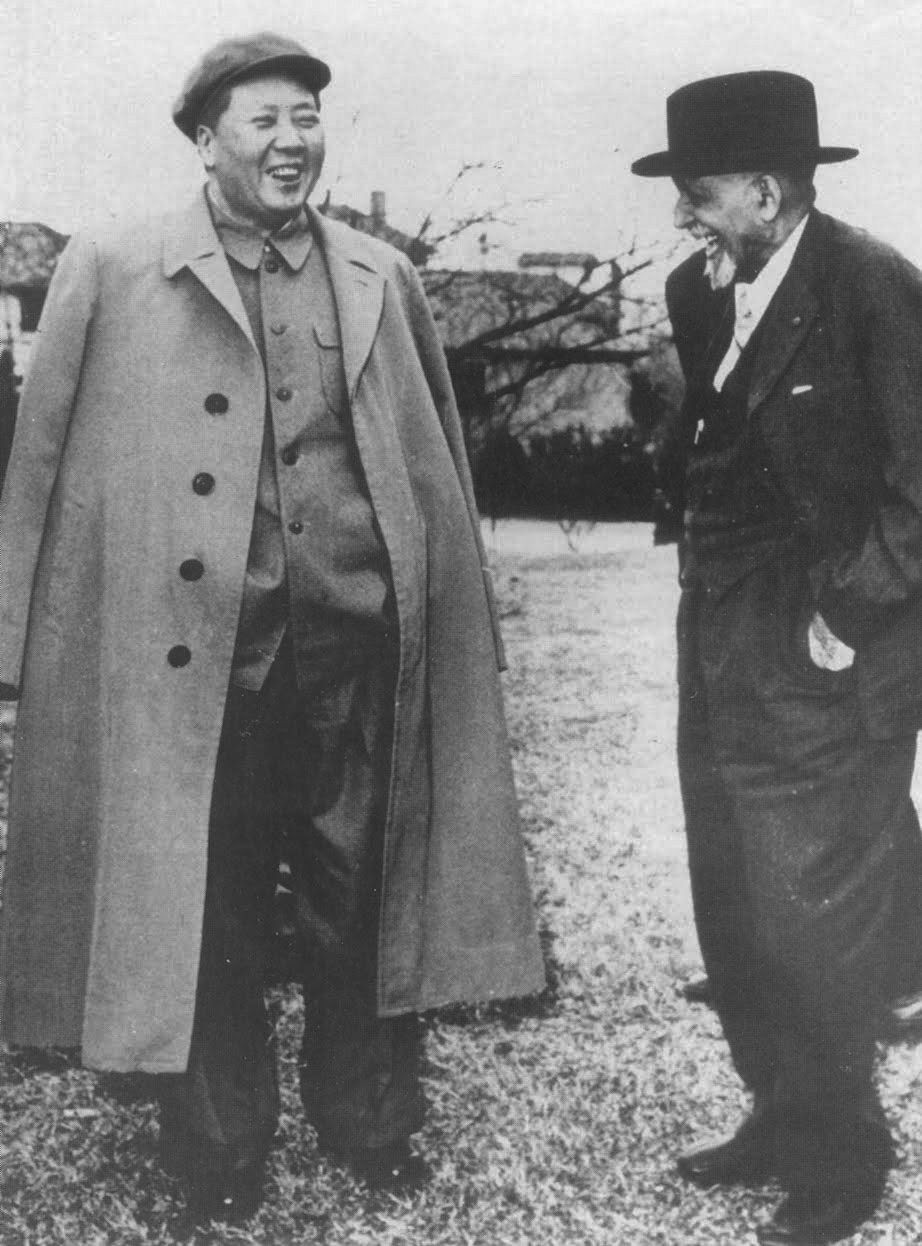 W.E.B. Du Bois meeting Chinese Premier Mao Zedong in 1959 (Image: Wikipedia)
W.E.B. Du Bois meeting Chinese Premier Mao Zedong in 1959 (Image: Wikipedia)
- Matthew D. Johnson, ?From Peace to the Panthers: PRC Engagement with African American Transnational Networks, 1949?1979?, Past & Present 218 (2013): pp. 233?257
- Robin Kelley and Betsy Esch, ?Black Like Mao: Red China and Black Revolution?, in Souls: A Critical Journal of Black Politics, Society, and Culture 1 (June 1999): pp. 6?41
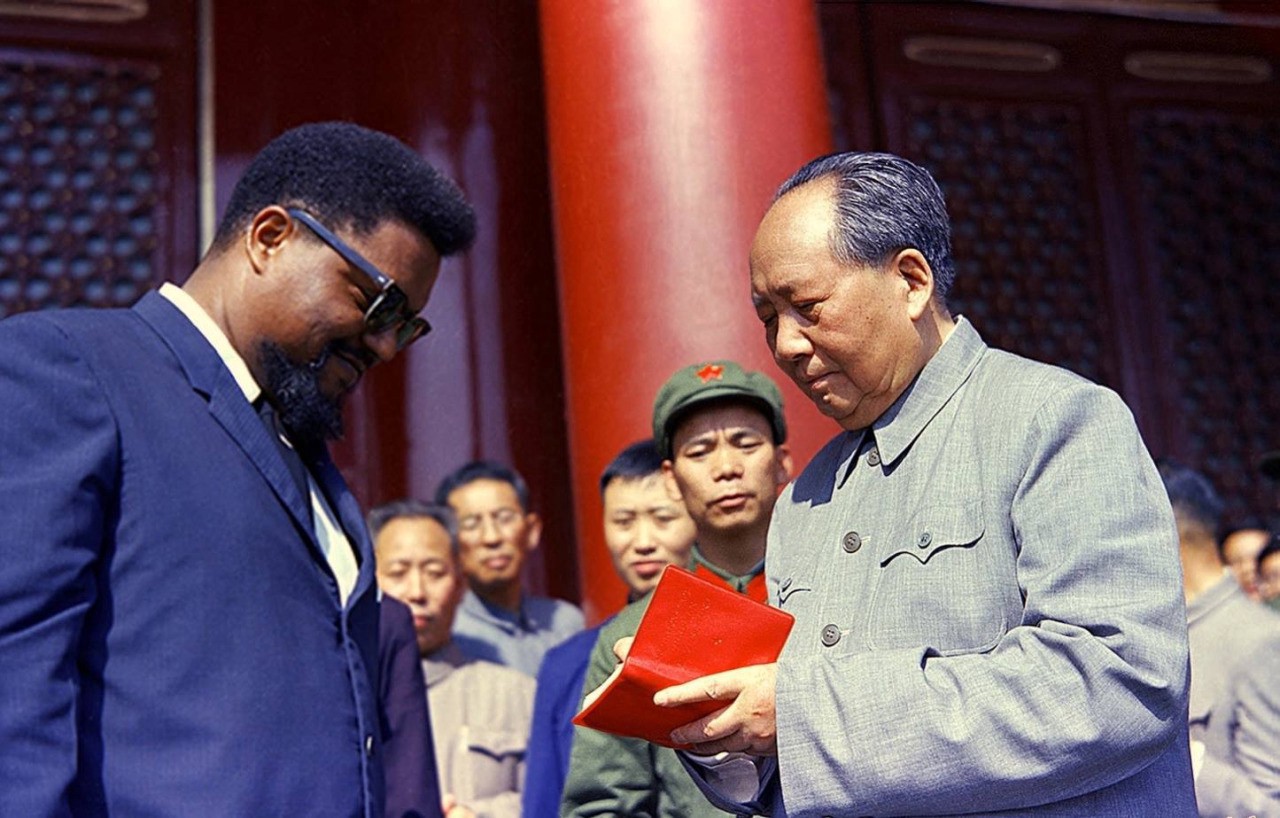 Robert F. Williams meeting Mao Zedong in 1966, photo by PLA photographer Meng Zhaorui ???
Robert F. Williams meeting Mao Zedong in 1966, photo by PLA photographer Meng Zhaorui ???
- Hongshan Li, ?Building a Black Bridge: China?s Interaction with African American Activists during the Cold War,? in Journal of Cold War Studies, Vol. 20, ?3, Summer 2018.
- Lianggong Luo and Liling Shi, ?The Richard Wright Study in China: An Annotated Bibliography,? Valley Voices 10.2 (2010): 106?126. [Provides a brief summary of Chinese scholarship from the 1940s to 2010 and sixty-four annotated entries.]
- Shu-mei Shih, ?Race and Revolution: Blackness in China?s Long Twentieth Century,? PMLA, Volume 128, Number 1, January 2013, pp. 156?162 (7)
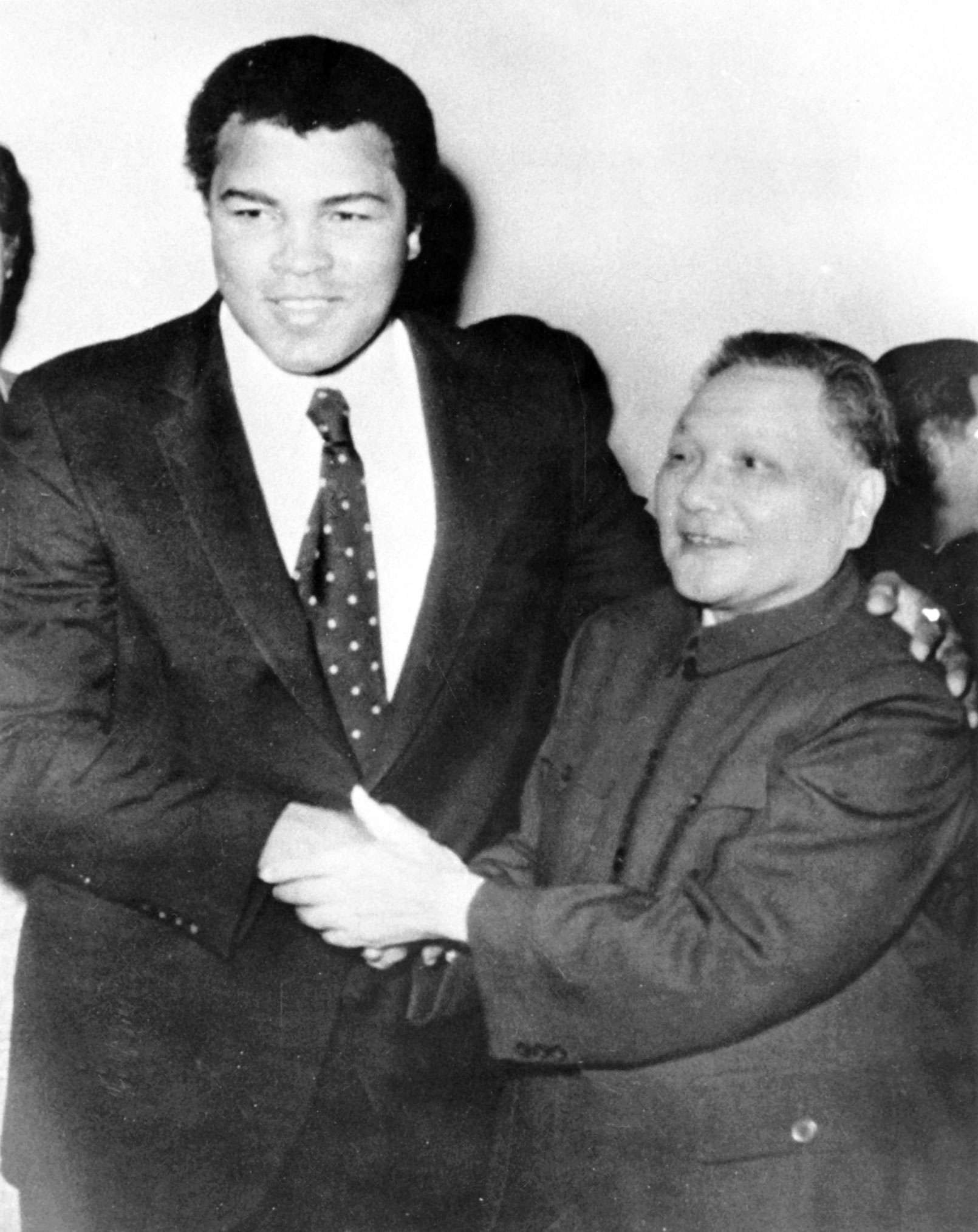 Deng Xiaoping greets boxer Muhammad Ali on his arrival in Beijing in 1979. Photo: AP
Deng Xiaoping greets boxer Muhammad Ali on his arrival in Beijing in 1979. Photo: AP
Books and Book Chapters
- Clarence Adams, An American Dream: The Life of an African American Soldier and POW Who Spent Twelve Years in Communist China, University of Massachusetts Press, 2007

Adams was a seventeen-year-old high school dropout in 1947 when he fled Memphis and the local police to join the U.S. Army. Three years later, after fighting in the Korean War in an all-black artillery unit that he believed to have been sacrificed to save white troops, he was captured by the Chinese. After spending almost three years as a POW, during which he continued to suffer racism at the hands of his fellow Americans, he refused repatriation in 1953, choosing instead the People?s Republic of China, where he hoped to find educational and career opportunities not readily available in his own country.
- David Bindman, Suzanne Preston Blier, and Henry Louis Gates, Jr., The Image of the Black in African and Asian Art, Belknap Harvard University Press, 2017
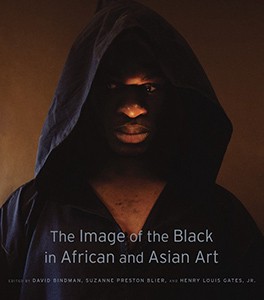
The Image of the Black in African and Asian Art asks how the black figure was depicted by artists from the non-Western world. Beginning with ancient Egypt ? positioned properly as part of African history ? this volume focuses on the figure of the black as rendered by artists from Africa, East Asia, and the Indian subcontinent. The aesthetic traditions illustrated here are as diverse as the political and social histories of these regions. From Igbo Mbari sculptures to modern photography from Mali, from Indian miniatures to Japanese prints, African and Asian artists portrayed the black body in ways distinct from the European tradition, even as they engaged with Western art through the colonial encounter and the forces of globalization.
- Zachary Scarlett, ?China?s Great Proletarian Cultural Revolution and the Imagination of the Third World,? in The Third World in the Global 1960s, Samantha Christiansen and Zachary Scarlett (eds.), Berghahn Books, 2012

Decades after the massive student protest movements that consumed much of the world, the 1960s remain a significant subject of scholarly inquiry. While important work has been done regarding radical activism in the United States and Western Europe, events in what is today known as the Global South ? Asia, Africa, and Latin America ? have yet to receive the attention they deserve. This volume inserts the Third World into the study of the 1960s by examining the local and international articulations of youth protest in various geographical, social, and cultural arenas. Rejecting the notion that the Third World existed on the periphery, it situates the events of the 1960s in a more inclusive context, building a richer, more nuanced understanding of the era that better reflects the dynamism of the period.
- Penny M. Von Eschen, Race against Empire: Black Americans and Anticolonialism, 1937?1957, Cornell University Press, 1997
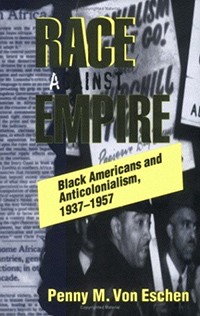
Von Eschen documents the efforts of African-American political leaders, intellectuals, and journalists who forcefully promoted anti-colonial politics and critiqued U.S. foreign policy. The eclipse of anti-colonial politics ? which Von Eschen traces through African-American responses to the early Cold War, U.S. government prosecution of black American anti-colonial activists, and State Department initiatives in Africa ? marked a change in the very meaning of race and racism in America from historical and international issues to psychological and domestic ones. She concludes that the collision of anti-colonialism with Cold War liberalism illuminates conflicts central to the reshaping of America; the definition of political, economic, and civil rights; and the question of who, in America and across the globe, is to have access to these rights.
- Robeson Taj Frazier, The East Is Black: Cold War China in the Black Radical Imagination, (Durham, N.C.: Duke University Press, 2014).
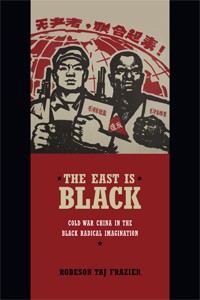
During the Cold War, several prominent African American radical activist-intellectuals ? including W.E.B. and Shirley Graham Du Bois, journalist William Worthy, Marxist feminist Vicki Garvin, and freedom fighters Mabel and Robert Williams ? traveled and lived in China. There, they used a variety of media to express their solidarity with Chinese communism and to redefine the relationship between Asian struggles against imperialism and black American movements against social, racial, and economic injustice. In The East Is Black, Taj Frazier examines the ways in which these figures and the Chinese government embraced the idea of shared struggle against U.S. policies at home and abroad. He analyzes their diverse cultural output (newsletters, print journalism, radio broadcasts, political cartoons, lectures, and documentaries) to document how they imagined communist China?s role within a broader vision of a worldwide anticapitalist coalition against racism and imperialism.
- Robeson Taj Frazier, ?Making Blackness Serve China,? in Migrating the Black Body: The African Diaspora and Visual Culture, Eds. Leigh Raiford and Heike Raphael-Hernandez, University of Washington Press, 2017
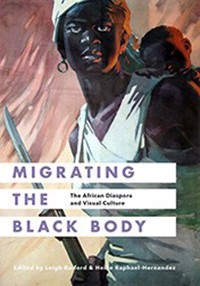
Migrating the Black Body explores how visual media-from painting to photography, from global independent cinema to Hollywood movies, from posters and broadsides to digital media, from public art to graphic novels-has shaped diasporic imaginings of the individual and collective self. How is the travel of black bodies reflected in reciprocal black images? How is blackness forged and remade through diasporic visual encounters and reimagined through revisitations with the past? And how do visual technologies structure the way we see African subjects and subjectivity? This volume brings together an international group of scholars and artists who explore these questions in visual culture for the historical and contemporary African diaspora. Examining subjects as wide-ranging as the appearance of blackamoors in Russian and Swedish imperialist paintings, the appropriation of African and African American liberation images for Chinese Communist Party propaganda, and the role of YouTube videos in establishing connections between Ghana and its international diaspora, these essays investigate routes of migration, both voluntary and forced, stretching across space, place, and time.
- Marc Gallicchio, The African American Encounter with Japan and China: Black Internationalism in Asia, 1895?1945, The University of North Carolina Press, 2000.
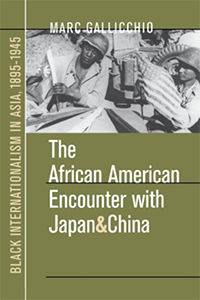
In the first book to focus on African American attitudes toward Japan and China, Marc Gallicchio examines the rise and fall of black internationalism in the first half of the twentieth century. This daring new approach to world politics failed in its effort to seek solidarity with the two Asian countries, but it succeeded in rallying black Americans in the struggle for civil rights.
- Anne Garland Mahler, From the Tricontinental to the Global South: Race, Radicalism, and Transnational Solidarity, Duke University Press, 2018

In From the Tricontinental to the Global South Anne Garland Mahler traces the history and intellectual legacy of the understudied global justice movement caled the Tricontinental ? an alliance of liberation struggles from eighty-two countries, founded in Havana in 1966. Focusing on racial violence and inequality, the Tricontinental?s critique of global capitalist exploitation has influenced historical radical thought, contemporary social movements such as the World Social Forum and Black Lives Matter, and a Global South political imaginary. The movement?s discourse, which circulated in four languages, also found its way into radical artistic practices, like Cuban revolutionary film and Nuyorican literature. While recent social movements have revived Tricontinentalism?s ideologies and aesthetics, they have largely abandoned its roots in black internationalism and its contribution to a global struggle for racial justice. In response to this fractured appropriation of Tricontinentalism, Mahler ultimately argues that a renewed engagement with black internationalist thought could be vital to the future of transnational political resistance.
- Bill V. Mullen, ?By the Book,? in Alexander Cook (Ed.), Mao?s Little Red Book: A Global History, Cambridge University Press, 2014
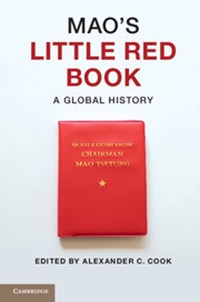
A defining moment in the history of US radicalism?s Maoist turn remains Black Panther Party (BPP) founder Bobby Seale?s recollection of the role of Quotations from Chairman Mao in building the Panthers? organization and ideology. Bill V. Mullen explores the reception of Mao?s ?Little Red Book? among the Black Panther Party members in the 1960s and 1970s in Alexander Cook?s edited volume.
- Dayo F. Gore, Radicalism at the Crossroads: African American Women Activists in the Cold War, New York: New York University Press, 2011
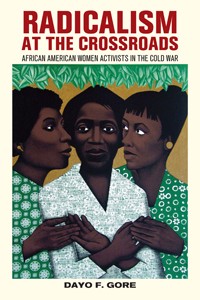
In this exciting work of historical recovery, Dayo F. Gore unearths and examines a dynamic, extended network of black radical women during the early Cold War, including established Communist Party activists such as Claudia Jones, artists and writers such as Beulah Richardson, and lesser known organizers such as Vicki Garvin and Thelma Dale. These women were part of a black left that laid much of the groundwork for both the Civil Rights Movement of the 1960s and later strains of black radicalism. Radicalism at the Crossroads offers a sustained and in-depth analysis of the political thought and activism of black women radicals during the Cold War period and adds a new dimension to our understanding of this tumultuous time in United States history.
- Gerald Horne, Black and Red: W. E. B. Du Bois and the Afro-American Response to the Cold War, 1944?1963, SUNY Press, 1985
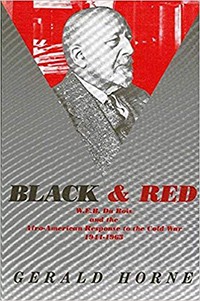
In this extensively researched study, Gerald Horne shows that Du Bois? later activities were the culmination of his lifelong concerns, which Du Bois resolutely followed despite the threats of Cold War McCarthyism. In investigating Du Bois? last 20 years, Horne shows how the confluence of Cold War anticommunism and attempts to discredit the civil rights and anticolonial movements influenced the evaluation of Du Bois? activity.
- Gerald Horne, Race Woman: The Lives of Shirley Graham Du Bois, New York University Press, 2002
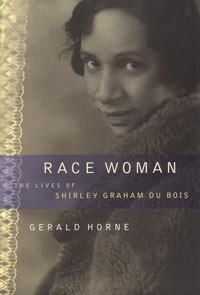
One of the most intriguing activists and artists of the twentieth century, Shirley Graham Du Bois also remains one of the least studied and understood. In Race Woman, Gerald Horne draws a revealing portrait of this controversial figure who championed the civil rights movement in America, the liberation struggles in Africa and the socialist struggles in Maoist China. Through careful analysis and use of personal correspondence, interviews, and previously unexamined documents, Horne explores her work as a Harlem Renaissance playwright, biographer, composer, teacher, novelist, Left political activist, advisor and inspiration, who was a powerful historical actor.
- Robin D.G. Kelley, Chapter 3, ?Roaring from the East,? in Freedom Dreams: The Black Radical Imagination, Beacon Press, 2003.
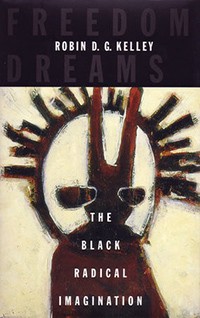
Kelley unearths freedom dreams in this exciting history of renegade intellectuals and artists of the African diaspora in the twentieth century. Focusing on the visions of activists from C. L. R. James to Aime Cesaire and Malcolm X, Kelley writes of the hope that Communism offered, the mindscapes of Surrealism, the transformative potential of radical feminism, and of the four-hundred-year-old dream of reparations for slavery and Jim Crow. From ?the preeminent historian of black popular culture? (Cornel West), an inspiring work on the power of imagination to transform society.
- John Oliver Killens, Black Man in the New China, Los Angeles: US-China Peoples Friendship Association, 1976. Pamphlet.
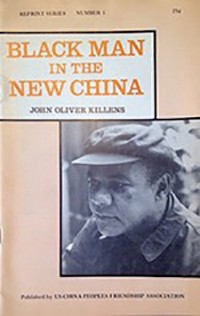
Based on his travels to China in 1973, this pamphlet by John Oliver Killens was a version of a piece originally published in Black World in November, 1975. The pamphlet was published by the US-China Peoples Friendship Association in Los Angeles.
- Luo Lianggong, ?China and Political Imagination in Langston Hughes?s Poetry,? in Yuejun Zhang and Stuart Christie (eds.), American Modernist Poetry and the Chinese Encounter, Palgrave Macmillan, 2012
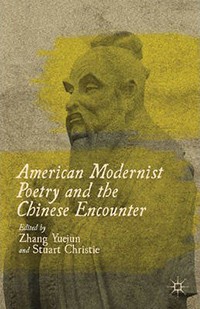
American Modernist Poetry and the Chinese Encounter offers a framework for understanding the variety of imagined encounters by eight different American poets with their imagined ?Chinese? subject. The method is historical and materialist, insofar as the contributors to the volume read the claims of specific poems alongside the actual and tumultuous changes China faced between 1911 and 1979. Luo Lianggong?s chapter addresses Langston Hughes poetry, in particular his poem Shanghai, which he composed after visiting the city in 1934.
- Bill V. Mullen and Cathryn Watson (eds.), W. E. B. Du Bois on Asia: Crossing the World Color Line, University Press of Mississippi Press, 2005
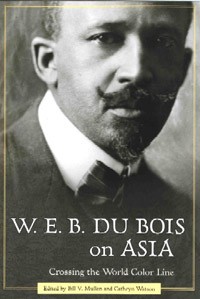
Du Bois?s lifelong certitude that Asia would play a central role in determining the fates of races, nations, and world systems of power has not until now been made fully available. W. E. B. Du Bois on Asia captures in unprecedented detail Du Bois?s first-person experiences of and responses to Indian nationalism, the war between China and Japan, the life of Mahatma Gandhi, colonialism in Malaysia and Burma, and the promise of China?s Communist Revolution. It also provides critical understanding of Du Bois?s obsession with the eternal relationship between Asia and Africa dating from antiquity to the postcolonial era.
- Greg Robinson, ?Internationalism and Justice: Paul Robeson, Asia, and Asian Americans,? in AfroAsian Encounters: Culture, History, Politics, eds. Heike Raphael-Hernandez and Shannon Steen (New York University Press, 2006)

AfroAsian Encounters is the first anthology to look at the mutual influence of and relationships between members of the African and Asian diasporas. While these two groups have often been thought of as occupying incommensurate, if not opposing, cultural and political positions, scholars from history, literature, media, and the visual arts here trace their interconnections and interactions, as well as the tensions between the two groups that sometimes arise. AfroAsian Encounters probes beyond popular culture to trace the historical lineage of these coalitions from the late nineteenth century to the present.
- Judy Tzu-Chun Wu, Radicals on the Road: Internationalism, Orientalism, and Feminism During the Vietnam Era (Ithaca: Cornell University Press, 2013)
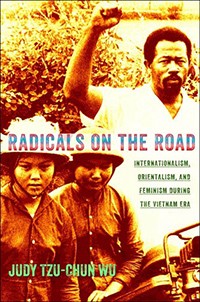
The chapter ?Anticitizens, Red Diaper Babies, and Model Minorities? in Wu?s book discusses the journey of the ?U.S. People?s Anti-Imperialist Delegation,? led by Black Panther Party leader Eldridge Cleaver, in the summer of 1970. The multi-ethnic 11-member team, which also included later-Black Panther chairwoman Elaine Brown, toured North Korea, North Vietnam, and China. Wu considers the lens through which they perceived socialist Asia to be a form of ?radical? Orientalism.
 Chinese sculptor Lei Yixin designed the Stone of Hope, the statue of Martin Luther King Jr. at the King Memorial near the United States National Mall. He has previously sculpted around 150 public monuments, including Mao Zedong.
Chinese sculptor Lei Yixin designed the Stone of Hope, the statue of Martin Luther King Jr. at the King Memorial near the United States National Mall. He has previously sculpted around 150 public monuments, including Mao Zedong.
Audio and Visual Resources
- They Chose China, film produced by Shuibo Wang, (distributed by National Film Board of Canada/Office Nacional du Film, Canada), 52mins:
They Chose China
In this feature documentary, Oscar-nominated filmmaker Shuibo Wang (Sunrise Over Tiananmen Square) aims his camera at?
www.nfb.ca
- Singer and actor Paul Robeson sings the Chinese National Anthem while on tour in Europe in 1949:
- Video footage of W.E.B. DuBois? visit to the People?s Republic of China in 1959, by China Central News and Documentary Films Studio:
- Robeson Taj Frazier ? From Mao to Yao: African-American Encounters with China, talk at USC on November 11, 2013:
Digital Archives
Digital archives are a great way to explore original materials. In particular, the Wilson Center?s Cold War International History Project and UMass Amherst?s W.E.B. du Bois? papers are excellent teaching resources. Two poster collections (The University of Westminster China Poster Collection and the Landsberger Collection) also contain Chinese digitized propaganda posters, some of which are the from Maoist period and depict the struggle of black people, ostensibly from Africa and its diaspora, against imperialism.
- Wilson Center Cold War International History Project includes a number of online open collections, including on China?s relationship with Africa and North Korea and the radical American left.
 Tanzania?s President Julius Nyerere visits China, 1965 (http://english.ecnu.edu.cn/)
Tanzania?s President Julius Nyerere visits China, 1965 (http://english.ecnu.edu.cn/)
- W.E.B. Du Bois papers at University of Massachusetts, Amherst
 W.E.B. DuBois watching a National Day parade in the PRC, 1962 (Image: Department of Special Collections and University Archives, W.E.B. Du Bois Library, University of Massachusetts Amherst)
W.E.B. DuBois watching a National Day parade in the PRC, 1962 (Image: Department of Special Collections and University Archives, W.E.B. Du Bois Library, University of Massachusetts Amherst)
- The University of Westminster China Poster Collection
The University of Westminster?s Chinese Poster Collection is a unique archival collection of some 800 posters spanning the period between the late 1950s and the early 1980s.
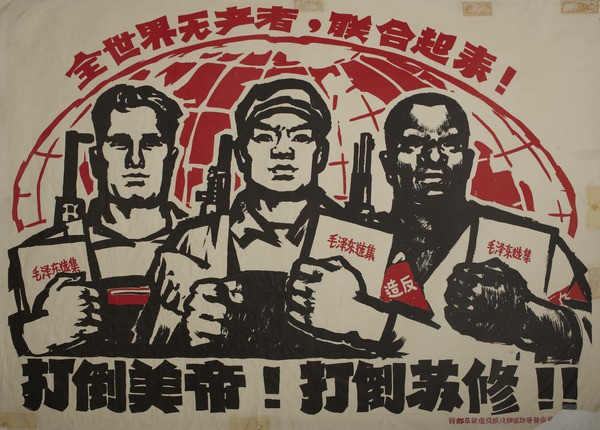 Three workers/soldiers, one black one Chinese one caucasian, carrying guns and Mao?s selected works. big globe in background with ?proletarians of the world unite? slogan behind. University of Westminster China Poster Collection.
Three workers/soldiers, one black one Chinese one caucasian, carrying guns and Mao?s selected works. big globe in background with ?proletarians of the world unite? slogan behind. University of Westminster China Poster Collection.
- The Stefan Landsberger Collection
Over 1.600 Chinese propaganda posters are shown on this website. The Gallery features 200 highlights, from the collections of the International Institute of Social History, Amsterdam, and Stefan R. Landsberger (University of Amsterdam, Leiden University).
 Oppose hegemonism, uphold world peace ? maintain a foreign policy of independence and own initiative. Landsberger Collection.
Oppose hegemonism, uphold world peace ? maintain a foreign policy of independence and own initiative. Landsberger Collection.
Ph.D. Dissertations
Zachary Scarlett, ?China After the Sino-Soviet Split: Maoist Politics, Global Narratives, and the Imagination of the World? (PhD diss., Northeastern University, 2013)
- The chapter ?Race, Anti-colonialism, and Civil Rights in China?s 1960s? in Scarlett?s dissertation addresses the ways in which U.S. black freedom movements were incorporated into the ?global narratives? of Maoist China, narratives which Scarlett argues were essentially about international class struggle.
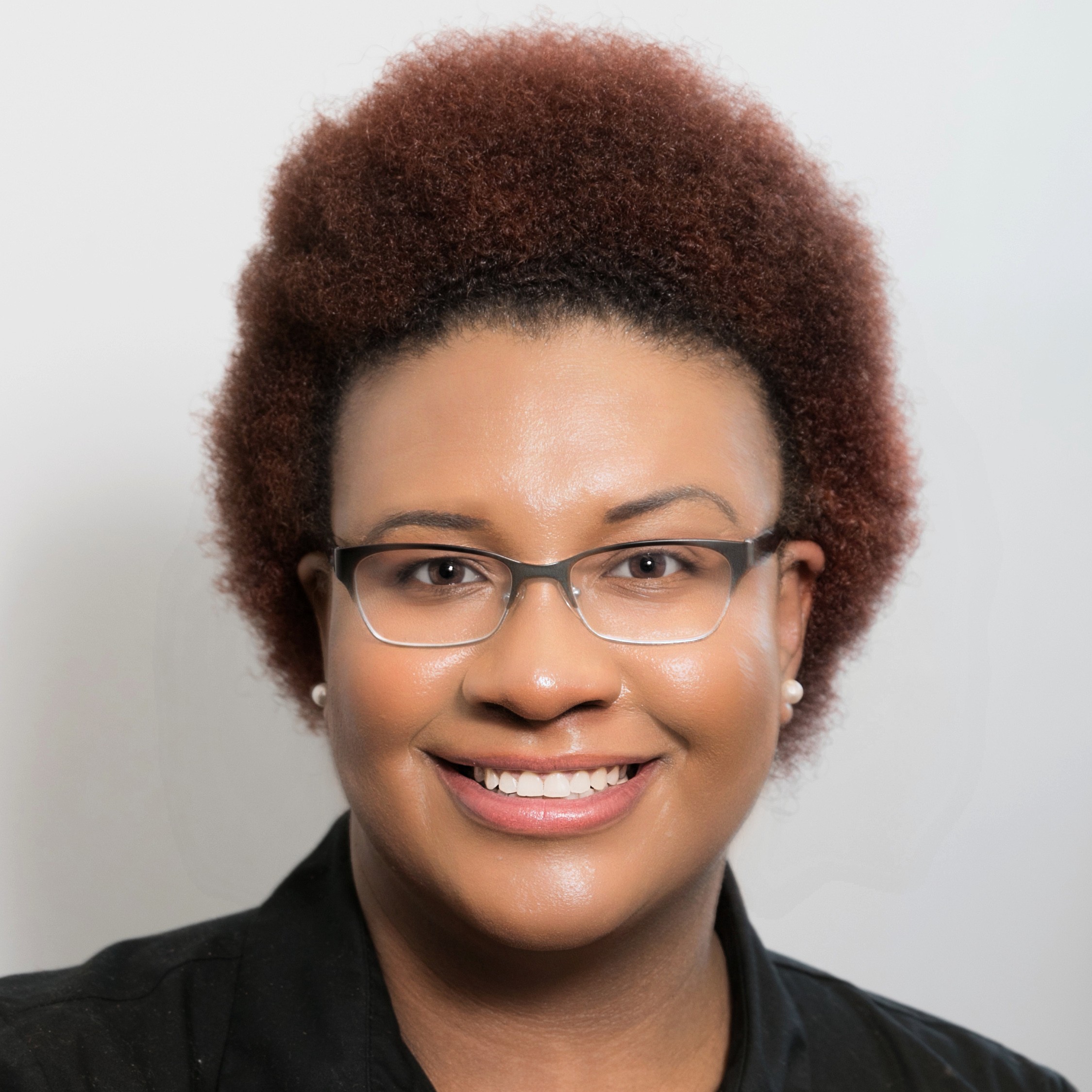
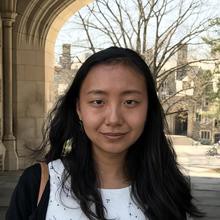
About the authors: Keisha A. Brown (left) is Assistant Professor of History in the Department of History, Political Science, Geography, and Africana Studies in the College of Liberal Arts at Tennessee State University, and a 2018?2019 JWJI fellow at Emory University. Professor Brown is an historian of modern China, with allied interests in race and ethnic studies, postcolonial theory, and social and cultural history in modern East Asia. Specifically, Professor Brown is interested in modern understandings of what she has termed Sino-Black relations.
Ruodi Duan (right) is a Ph.D. Candidate in History at Harvard University. Her research focuses on the various strands of Third World, Pan-Africanist, and Afro-Asian ideas and movements that took shape during the Cold War. Her other academic interests include Asian American history, Pacific history, and cultural and ethnic studies.
